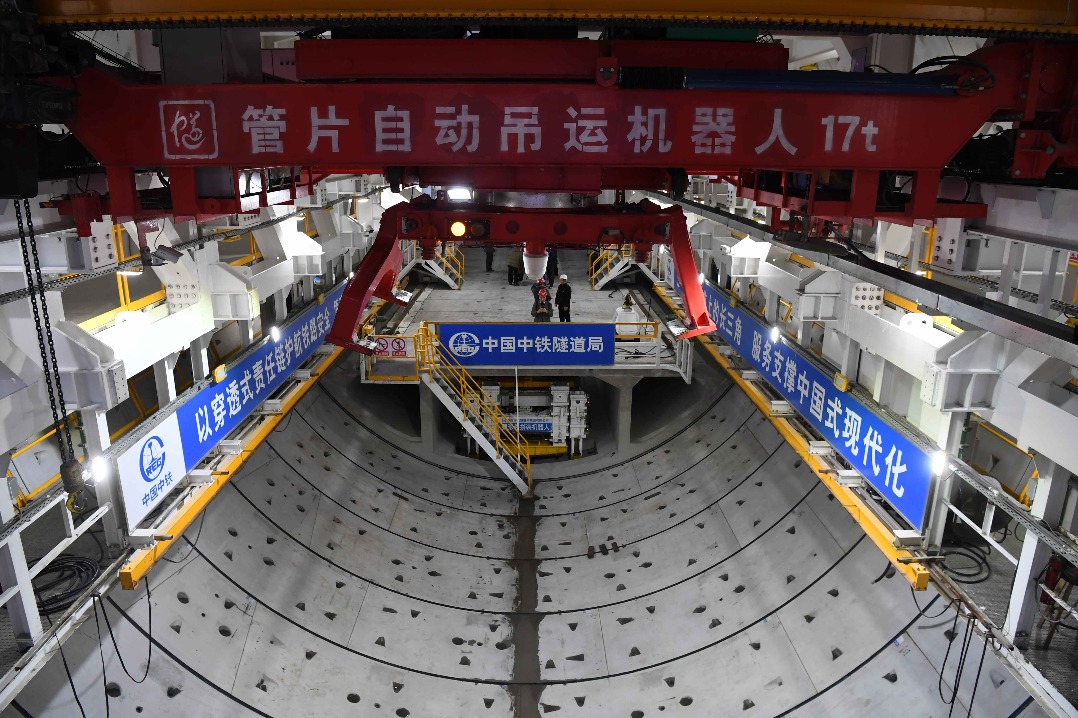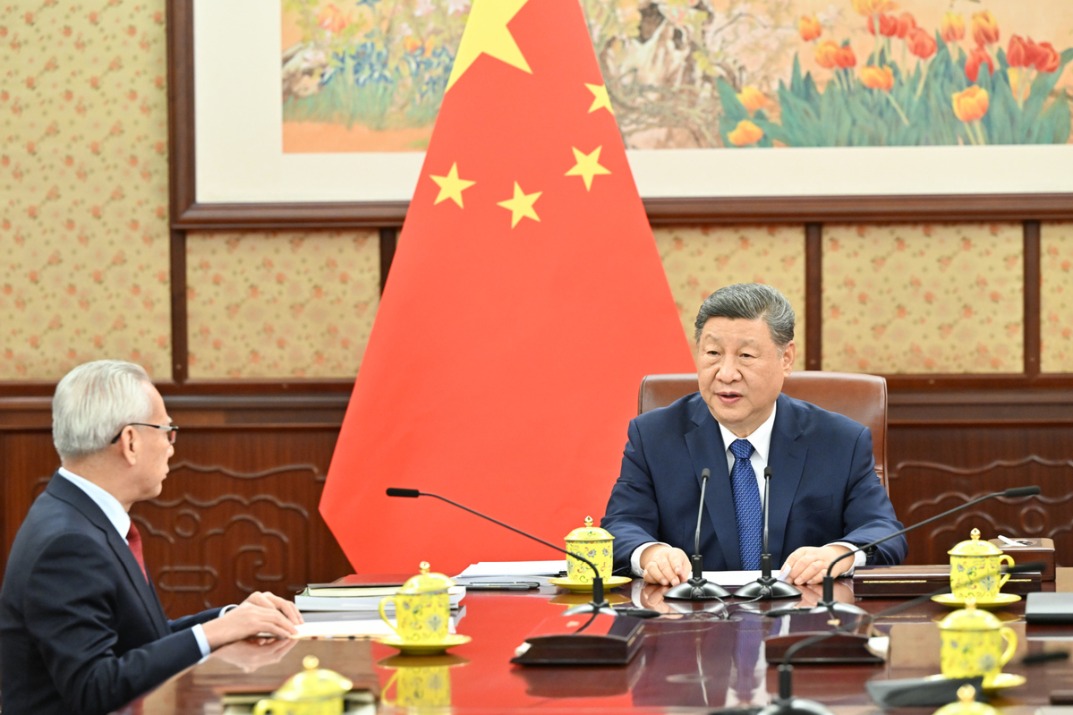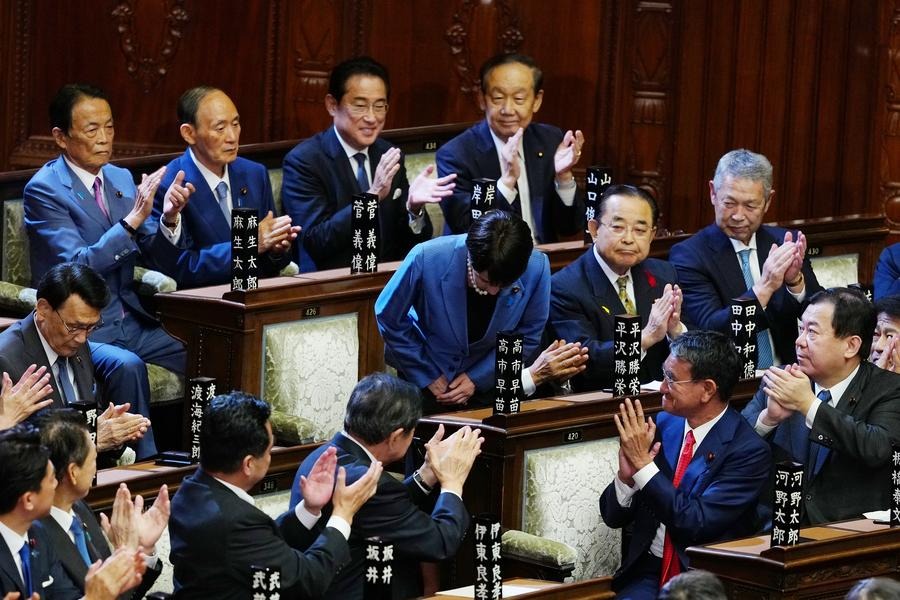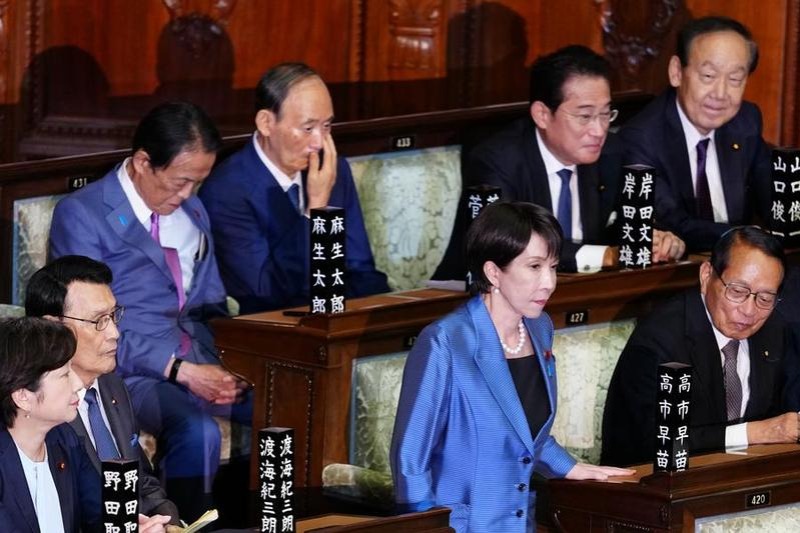Economic restructuring during 'dual circulation'
A new type of urbanization and stronger social security system will top China's green development agenda in the next stage


To cope with the unprecedented challenges facing the global economy, China has unveiled the 14th Five-Year Plan (2021-25) and decided to follow the "dual circulation "paradigm, which will chart the course of the country's economic restructuring in the next five to 15 years. The "dual circulation" development paradigm is centered on the domestic economy (or "internal circulation") and aims to integrate the domestic economy with the global economy (or "external circulation") to create new advantages for China in global competition and cooperation.
To begin with, "dual circulation" will make China technologically self-dependent in some key areas. If China fails to reduce its reliance on imports of microchips, semiconductors and other electronic components, its high-tech sector's growth will founder in the long run.
China's institutional advantages have helped it to largely contain the novel coronavirus. But when it comes to the business environment, the government should refrain from micromanaging the market and, instead, create a level playing field which will allow enterprises to be innovation leaders. The favorable policies rolled out in special economic zones at the county level, city level, provincial level and national level are substantially different. For instance, the tax breaks offered by the Suzhou economic development zone in Jiangsu province pale into insignificance compared with that of Shanghai Zhangjiang economic development zone, simply because the latter is a national-level special economic zone. If the central government tilts toward certain areas, it will unwittingly stifle fair competition.
Second, a new type of urbanization. China's urbanization is proceeding at a rapid pace: about 62 percent of its population already lives in cities. But China's seemingly high urbanization rate is still lower than the 75 percent of Japan and the Republic of Korea when they were in the same stage of development as China is today.
In fact, the 62 percent urbanization rate will drop to 45 percent if measured by the hukou (household registration) system. In 2013, the Third Plenary Session of the 18th Communist Party of China Central Committee proposed that the hukou system be reformed, by asking small cities to totally lift the hukou restrictions and medium-sized cities to grant hukou to any person who have lived there for three years or more. But the implementation was beset with many difficulties.
Another trend is the forming of city clusters. They are developing at a healthy pace in the Pearl River Delta and Yangtze River Delta regions, and the middle reaches of the Yangtze River, which are expected to attract 60-70 percent of the total population in 2035.
Third, China will facilitate equal access to public services, especially for rural residents. Some people have criticized the "village-turned-community" program, a major urban-rural integration initiative that helps farmers move from the countryside to communities with modern facilities, because they fear it will destroy traditional rural culture. But they should not turn a blind eye to the ever-widening urban-rural divide in terms of living standards and public welfare services. If villagers don't live in communities, the cost of providing them with good public services will be prohibitively high. But the process must proceed cautiously and gradually.
China also needs to make its social security system more consistent. Its dwindling workforce is widely believed to be the biggest challenge posed by the aging population, but automation and the rapid development of artificial intelligence, according to some projections, will replace more human jobs offsetting the negative impact of the shrinking working-age population. As such, the biggest problem of the aging population is the social security burden, especially pensions.
About 340 million Chinese born between 1962 to 1976 will retire between 2022 and 2035. With the ever-growing number of pensioners, China's total pension funds may soon run dry. To address the problem, China needs to not only raise the retirement age but also improve the social security system-which in turn will facilitate the free flow of people across the country. It is important because the stark socioeconomic differences in different regions are hampering people's mobility and affecting the "internal circulation".
Perhaps China needs a tiered system with universal social security coverage-where everyone has access to social security but the premiums paid can vary from person to person, which basically means the more you pay, the more (or costlier) services you get.
And fourth, the green economy. Addressing the 75th session of the United Nations General Assembly in September, President Xi Jinping said China's carbon emissions will peak by 2030 and the country will strive to become carbon neutral by 2060.Combined with that, the fact that the government has unveiled special policies to promote green development means enterprises' focus now will be on not only increasing profits but also reducing emissions, which will facilitate low-carbon economic growth and better environmental protection.
The People's Bank of China and several other financial watchdogs have issued documents promoting green finance. Some security brokers in the secondary market have already adopted a new financial index for sustainability, co-developed by the National School of Development at Peking University and China Alliance of Social Value Investment, to gauge enterprises' profitability and green performance, as they have found a strong correlation between the two.
In the next stage of green development, a new type of urbanization and stronger social security system will top the agenda of China's economic development.
The author is the dean of the National School of Development at Peking University. The author contributed this article to China Watch, a think tank powered by China Daily. The views do not necessarily reflect those of China Daily.


































